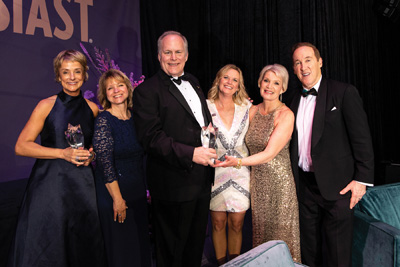The rate structure of workers’ compensation insurance has been developed without an understanding of how economies work. The system tracks every vocation, giving it a cost, and tracking the direct costs by each job code. Common sense will tell you that a construction worker or manufacturing employee will incur more injuries than a secretary or a salesman.
The higher medical costs go, the greater the system discourages physical skill vocations. Is it any wonder that California is losing manufacturing jobs? Most economic theory holds that each manufacturing job supports a number of service jobs. So if you lose manufacturing jobs you also lose service jobs too.
The Workers’ Compensation Insurance Rating Board (WCIRB) sets rates through a complex formula using employer payroll information, workers’ compensation cost experience and job class experience. They develop a "pure premium" rate. This is the rate of premiums required to balance loss and loss adjustment expense costs of the industry. The methodology employed is to recover precisely the proper amount from those that insured the expenses despite whether the employer is profitable or whether he can move jobs out of the state if the rates for "physical" vocations become absurdly high. For example, if you are a clerk your rate is $2.03 per hundred dollars of pay; but if you are a janitor, your rate is $26.16, almost 13 times higher. Any ÒphysicalÓ skills employer in California will tell you the system is excessive.
The WCIRB focuses its rating on the job class and charges businesses in that manner. The State of California Department of Development, in setting rates for unemployment insurance, also charges different rates based on experience, with employers with lower loss paying less but the difference from lowest to highest is much more rational. Thus, it is fair to conclude that WCIRB rates have been prepared in an "ivory tower" and, on balance, are irrational. The WCIRB might argue that their Òpure premiumÓ rate repays the "job class," but it wholly overlooks macro economic effects that damage crucial industries—"physical" industries on which the California economy depends.
Interestingly, the WCIRB is not a state agency. The governing committee has 12 members, eight of whom work for insurance companies. They are essentially a cartel, which sets the prices. The state Insurance Commissioner does not have the authority to set rates for workers’ compensation insurance. The WCIRB’s mission is not jobs for Californians, it’s the solvency of the workers’ compensation insurance industry.
The present formula allows and, in fact, mandates a system "to kill the goose that lays the golden eggs," the Golden State’s precious jobs. The costing formula must be changed to balance "physical" and "mental" vocations. There also needs to be a mechanism to protect the employers’ solvency. Because without business profits, there are not jobs to support the social system. This is the crux of the crisis the State of California finds itself in.
How do we reform a system that is anti-job, anti-business and turn it into a system that holds and creates jobs? There seems to be two directions: (1) reform the system that exists or (2) combine workers’ comp and State Unemployment Insurance (SUI) into a "New" State Department of Development. (This becomes a real possibility with the news that the present SUI system is expected to go broke in January 2004 and thus needs reform and restructuring.)
Reforming the system has to begin with reforming the WCIRB’s governing board by either adding public members and a public chairman or the appointment of an ad hoc oversight commission. Once control is in public hands, a new rating structure should put in place maximum rates that don’t bankrupt businesses. Public meetings with rate makers must be held. Economists experienced with job maintenance and job growth should be hired and their recommendations factored into the rate-setting process.
That process looks to the future, but there must be aggressive assistance for the businesses throughout the state that are in the midst of the ravages of egregious rates which they can’t pay. The analogy of fire damage and FEMA (Federal Emergency Management Agency) relief comes to mind. The new governor, in my view, must declare "physical skill" businesses with current workers’ comp rates over twice the median workers’ comp rate, an "emergency" eligible for relief. FEMA offices should be set up in every county. A relief fund must be established before these businesses go bankrupt, leave the state, lay off their workers or, as the governor-elect has said, "are gone, gone, gone."
The Press Democrat on October 19, 2003 stated the "average amount California employers pay for workers’ compensation insurance per $100 of payroll1 is $5.852." That is 5.85% of payroll. But as mentioned earlier, if you’re a janitorial service with a job code of 9008, your rate at 7/01/03 was 26.16% of payroll; that is for every $100,000 of payroll, your workers’ compensation insurance is $26,160. That’s before they apply an experience modifier.
One bill I saw had a 180% modifier. Multiply $26,160 by 1.8 and the amount you must pay is $47,088. Janitors, of course, have lower rates than many other "physical skill" enterprises. Some call this insurance, but for those who have to pay, it is a prejudicial form of taxation. The insurers argue that a method is needed to recognize those employers with higher than average losses to encourage the prevention of industrial accidents. The experience modifier rating provides that method. But who should empower the insurance industry to punish "physical skill" employers over "mental skill" employers. There is a random exposure that employers face that "system abuses" will select their firm. In 2000, the average cost of an indemnity claim was more than $38,000, nearly twice what it was in 1993 (per WCIRB’s annual report). What California employers need is an insurance policy to protect them from random claims and the WCIRB’s punitive rating system.
1Actual amounts varies widely. 2Through March (source: Workers’ Compensation Insurance Rating Bureau.)
John Clow is a retired CPA and a part-time CFO-for-hire who works with small businesses throughout the North Bay, www.johnclowcfo.com or (707) 938-2535."



